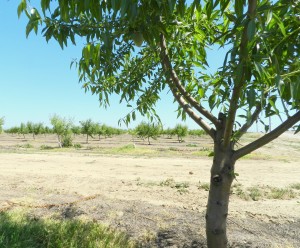
Among the biggest surprises of Modesto’s last election, none was more puzzling than the defeat of Measure I, the anti-sprawl initiative designed to protect the region’s prime farmland. Historically, Modesto residents have supported farmland protection by huge margins.
Most observers felt Measure I would pass easily, especially since it followed closely on an emotionally-charged revolt against the city’s attempt to include portions of historic Wood Colony in its general plan. But even as threats to Wood Colony brought about fierce opposition, an even stronger movement was growing to curb farmers’ dominance of local politics, most especially the politics of water.
For years, Modesto residents have nurtured a simmering anger over subsidies by electric customers for local farmers. The Modesto Irrigation District’s (MID) Board of Directors has always been dominated by farmers who felt low prices for farm water could be justified by the old argument, “No Farms, No Food.”
The drought changed everything. Statewide, urban residents were required to curb water use. In some places, prices for water soared to two-thousand dollars per acre foot. Meanwhile, MID Directors resisted public pressure to raise farm water prices, and the nearby Oakdale Irrigation District (OID) persisted in attempts to sell “surplus” water to out-of-region buyers.
And even during the worst dry spell in memory, almond orchards were sprouting everywhere. Within a decade, Stanislaus County alone added over thirty thousand acres of new orchards, many of them in the foothills where the only water source was underground.
Stratospheric almond prices pushed farm profits to all-time highs, but even with the much-publicized “multiplier effect,” the region’s economy continued to suffer high unemployment and poverty rates. Worse yet for farmers’ public image, the proliferation of almond groves meant fewer acres were planted in more popular food products. As prices rose for staples like tomatoes, consumers had less and less appreciation for slogans like, “We Farm, You Eat.”
Long insulated from public criticism by an almost hallowed reverence for farming, local farmers have been slow to realize a dramatic change in public sentiment. It’s hard to argue we need to protect local farmland when we add thousands of acres of farmland every year. It’s even harder to argue farming is in jeopardy when ag profits reach new highs every harvest.
Nonetheless, criticism of below-cost farm water prices and out-of-district water sales has too often been met with cold indifference. Both the Modesto Irrigation District and Oakdale Irrigation District (OID) deliver water to farmers at prices well below the cost of operation and maintenance, and MID’s recent twenty percent hike in prices did far too little to balance the books.
Even many farmers will say privately they think prices are too low, and just recently farmers in the Oakdale region have filed lawsuits against OID’s ongoing attempts to sell water out of the region. Complaints reached a crescendo when OID Director Gary Osmundson supported an on-farm conservation program which pays farmers for fallowing land.
When fellow farmers learned that Osmundson stood to gain a six-figure windfall from the program, his vote in favor of fallowing was met with swift charges of a conflict of interest. Now OID faces not only a lawsuit for its failure to observe protocols required by the California Environmental Quality Act, but charges that one of its directors has a clear conflict of interest.
MID is also facing a lawsuit. The suit alleges MID subsidizes low farm water prices by overcharging its electric customers. Former MID Directors are on record as saying they believe the practice is unfair.
Given the sea change in public opinion, one would think MID and OID would have responded with sweeping changes in district policy. The defeat of Measure I should have been the final wake-up call for MID, and huge margins of victory for new directors in OID’s recent election should have signaled wide public disapproval of the status quo.
Nonetheless, both districts still seem mired in visions of a now-distant past, when farmers could do no wrong. Those days are over, but it may take even more losses, both in and out of court, before local irrigation districts accept the new politics of water.

Eric, an excellent analysis…one of your best.
Thank you Mike. Here’s hoping the almond business stays good for you.
Great post Eric. Unfortunately, there is alot of ignorance out there also. Higher water prices also means a shift to specialty crops like almonds. Tough to grow Tomatoes and Beans on $100 acre foot water. I hear comments from urbanites, especially outside the valley about how farmers need to grow crops that are drought tolerant. Really??? These people seemed to think farming is some backyard hobby. You have to actually grow something there is actually a market for and that will generate enough of a return to pay your bills.
Couldn’t agree more WestSider. But we all need to keep in mind that if all bean and tomato growers pay $100/ft the price of those crops will be shared by buyers everywhere. As long as water prices are dictated solely by profits, we can expect lower-margin crops to be squeezed out. Also, we should remember that all bubbles burst sooner or later. Almond prices are dropping back to realistic rates.